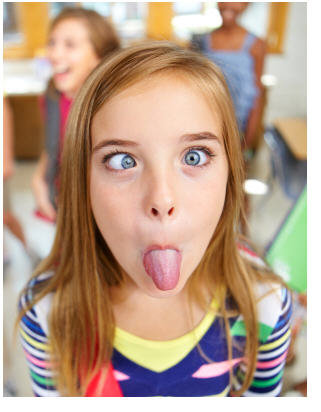
Humor Styles and Bullying in School:
No Laughing Matter
Staffordshire, UK; May 1, 2013—There is a clear link between children’s use of humor and their susceptibility to being bullied by their peers, according to a major new study released today by Keele University.
Funded by the Economic and Social Research Council and supported by academics at the University of Strathclyde and Oxford Brookes University, the research examined the links between how 11-13 year olds use different styles of humor and the problem of bullying in schools.
The findings reveal that children who use self-defeating forms of humor—such as self-disparaging language or putting themselves down to make other people laugh—are more likely to be bullied than those who use more positive forms of humor.* The study also found that peer victimization led to an increase in the use of self-defeating humour over time, showing that victims of bullying are often trapped in a vicious cycle, where being bullied deprives them of the opportunities to practice positive humour with peers and leads them to rely on self-defeating humour, perhaps as a way to get others to like them.
Dr. Claire Fox, lead researcher from Keele University, said, “What our study shows is that humor clearly plays an important role in how children interact with one another and that children who use humor to make fun of themselves are at more risk of being bullied. We know that this negative use of humor is a nurtured behavior, influenced by a child’s social environment rather than genetics. This makes the behavior easier to change, so we hope the next step for this study is to see whether it is possible to ‘teach’ children how to use humor to enhance their resilience and encourage them to not use negative forms of humor.”
The two year study involved 1,234 children who were questioned at the beginning and end of each school year. Researchers measured three types of bullying and victimization: verbal, physical and relational/indirect (e.g. social exclusion, spreading nasty rumors) and used self-reports and peer nominations to draw their conclusions. Each child was also assessed in relation to their number of friends, humor styles, symptoms of depression and loneliness and self-esteem.
*Four Types of Humor
Positive humour
• Self-enhancing humour ("If I am feeling scared I find that it helps to laugh.")
• Affiliative ("I often make other people laugh by telling jokes and funny stories.")
Negative humour
• Self-defeating ("I often try to get other people to like me more by saying something funny about things that are wrong with me or mistakes that I make.")
• Aggressive ("If someone makes a mistake I will often tease them about it.")
More information about this research project can be found at Keele University's ESRC Bullying and Humour Styles Project website.
